Mechanical Engg. Design
20+ Mechanical Engg. Design Interview Questions and Answers for Freshers
Asked in Swift Machines

Q. How proficient are you in Solidworks sheet metal and weldments?
I am highly proficient in SolidWorks, particularly in sheet metal and weldments, with extensive practical experience.
Experienced in creating complex sheet metal parts using the Sheet Metal feature, including flanges and bends.
Proficient in using the Weldments tool to design structural frames and supports, ensuring proper joint configurations.
Utilized the 'Convert to Sheet Metal' feature to streamline the design process for existing solid models.
Implemented design tables for p...read more
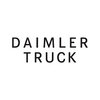
Asked in Daimler Truck

Q. What is the center of gravity? Write the formula to calculate it for an asymmetrical I section.
Centre of gravity is the point where the entire weight of an object can be considered to act upon. Formula for an asymmetrical I section is (A1*d1 + A2*d2)/(A1+A2)
Centre of gravity is important in designing structures and machines to ensure stability and balance
It is the point where the object will balance perfectly in any orientation
For an asymmetrical I section, the formula is (A1*d1 + A2*d2)/(A1+A2) where A1 and A2 are the areas of the two flanges and d1 and d2 are the dis...read more

Asked in Roots Multiclean

Q. What is the difference between ferrous and non-ferrous components?
Ferrous components contain iron, while non-ferrous components do not.
Ferrous components are magnetic, while non-ferrous components are not.
Ferrous components are prone to rust and corrosion, while non-ferrous components are more resistant.
Examples of ferrous components include steel and cast iron, while examples of non-ferrous components include aluminum and copper.
Asked in Swift Machines

Q. What are the basics of Solidworks 3D modeling?
Solidworks 3D modeling basics include sketching, extruding, revolving, lofting, and filleting.
Sketching: creating 2D profiles
Extruding: pulling a sketch into a 3D shape
Revolving: rotating a sketch around an axis to create a 3D shape
Lofting: creating a shape by blending two or more profiles
Filleting: rounding edges and corners
Asked in Swift Machines

Q. Are you able to create documentation?
Yes, I have experience in creating technical documents such as design specifications, assembly instructions, and test reports.
I have created design specifications for various projects, outlining the requirements and constraints for the design.
I have also created assembly instructions for the manufacturing team to follow during production.
Additionally, I have written test reports to document the results of product testing and analysis.
I am proficient in using software such as ...read more

Asked in Milestone PLM Solutions

Q. What was your prior experience with design software?
I have extensive experience with design softwares such as AutoCAD, SolidWorks, and CATIA.
Proficient in AutoCAD for 2D drafting and modeling
Skilled in SolidWorks for 3D modeling and simulation
Experience with CATIA for advanced surface modeling and assembly design
Mechanical Engg. Design Jobs



Asked in Swift Machines

Q. What software are you proficient in?
I am proficient in various software including CAD, CAM, and simulation software.
Proficient in CAD software such as SolidWorks, AutoCAD, and CATIA
Experience in CAM software like Mastercam and Fusion 360
Familiarity with simulation software such as ANSYS and COMSOL
Proficient in programming languages like Python and MATLAB for automation and analysis
Experience in project management software like MS Project and Asana
Asked in Swift Machines

Q. Can you work on AutoCAD 2D?
Yes, I have extensive experience working on AutoCAD 2D.
I have used AutoCAD 2D for various projects in my previous job.
I am proficient in creating and editing 2D drawings using AutoCAD.
I am familiar with the various tools and commands in AutoCAD 2D.
I can work on both simple and complex drawings using AutoCAD 2D.
I am open to learning new techniques and improving my skills in AutoCAD 2D.
Share interview questions and help millions of jobseekers 🌟

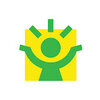
Asked in Happiest Minds Technologies

Q. What types of projects have you handled?
I have handled a variety of projects including product design, prototyping, and testing.
Designed and developed a new product for a client in the consumer electronics industry
Managed the prototyping and testing phases of a medical device project
Collaborated with a team to improve the efficiency of a manufacturing process
Implemented design changes to improve the performance of an existing product
Worked on a project to reduce the environmental impact of a manufacturing facility

Asked in Daimler Truck

Q. What are the types of sections?
Sections in mechanical engineering design refer to the shapes of cross-sections of structural members.
Sections can be classified as open or closed.
Open sections have an opening or a void in the cross-section, such as a C-channel or an I-beam.
Closed sections have a continuous cross-section, such as a rectangular or circular tube.
Sections can also be classified based on their shape, such as square, rectangular, circular, or elliptical.
The choice of section depends on the struct...read more

Asked in Daimler Truck

Q. Draw the Shear Force Diagram (SFD) and Bending Moment Diagram (BMD) for a simple cantilever beam.
Draw sfd and bmd for a simple cantilever beam
SFD shows the variation of shear force along the length of the beam
BMD shows the variation of bending moment along the length of the beam
Shear force is maximum at the fixed end and zero at the free end
Bending moment is maximum at the free end and zero at the fixed end

Asked in Claas

Q. Tool test of CATIA v5, with generative sheet metal module
CATIA v5 with generative sheet metal module is tested using various tools
Tools like bend, cut, flange, and stamp are tested
The accuracy and efficiency of the tools are evaluated
The ability to create complex sheet metal parts is assessed
The compatibility with other CAD software is also checked
Examples of sheet metal parts designed using CATIA v5 can be shown

Asked in Tata Motors

Q. What are some technical issues or problems you have encountered with computers?
Yes, there are technical issues and problems in computers.
Hardware failures such as hard drive crashes or overheating
Software bugs and glitches
Security vulnerabilities and hacking
Compatibility issues with different operating systems or software
Slow performance due to insufficient memory or processing power
Asked in SolidTeam Engineering

Q. How proficient are you with this software?
I am highly proficient in using this software, with extensive experience in designing complex mechanical systems.
I have completed multiple projects using this software, showcasing my proficiency and efficiency.
I am constantly updating my skills and knowledge in the latest features and tools of the software.
I have received positive feedback from colleagues and supervisors on my efficiency in using this software.
I am able to troubleshoot and problem-solve effectively within the...read more

Asked in Portescap

Q. What is the difference between first angle projection and third angle projection?
First angle projection places the object in the first quadrant, while third angle projection places it in the third quadrant.
First angle projection: Object is placed in the first quadrant, with views projected onto the opposite plane.
Third angle projection: Object is placed in the third quadrant, with views projected onto the same plane.
Example of first angle: A top view appears below the front view.
Example of third angle: A top view appears above the front view.
First angle i...read more
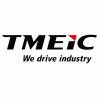
Asked in TMEIC

Q. What do you mean by IP?
IP stands for Intellectual Property, which refers to creations of the mind, such as inventions, literary and artistic works, designs, symbols, names, and images used in commerce.
IP refers to creations of the mind that are protected by law.
It includes inventions, literary and artistic works, designs, symbols, names, and images used in commerce.
IP can be protected through patents, copyrights, trademarks, and trade secrets.
Companies often invest in protecting their IP to maintai...read more
Asked in Metrolab Automation

Q. What is the 3-2-1 principle?
3-2-1 principle is a design guideline for creating a machined part that can be easily located and clamped in a machining operation.
The principle involves adding three locating surfaces on one face of the part, two on a perpendicular face, and one on the final face.
The three locating surfaces on one face are used to position the part in the X, Y, and Z directions.
The two locating surfaces on the perpendicular face are used to position the part in the remaining two directions.
T...read more

Asked in Tata Motors

Q. How were the machines run?
Machines are run using various energy sources and mechanisms, including motors, hydraulics, and pneumatics for specific tasks.
Electric motors convert electrical energy into mechanical energy, powering devices like conveyor belts.
Hydraulic systems use pressurized fluid to transmit force, commonly found in excavators and forklifts.
Pneumatic systems utilize compressed air to operate tools and machinery, such as air brakes in vehicles.
Internal combustion engines run on fuel, powe...read more
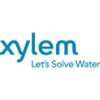
Asked in Xylem Water Solutions

Q. What is stress? Strain?
Stress is the force applied to a material, while strain is the resulting deformation or change in shape.
Stress is the internal resistance of a material to deformation under an applied force.
Strain is the measure of deformation or change in shape of a material due to stress.
Stress is typically measured in units of force per unit area (such as N/m^2 or psi).
Strain is a dimensionless quantity, often expressed as a percentage or in terms of length change.
Example: When a metal rod...read more
Asked in Ankam Play Systems

Q. Factor of safety and Pitch
Factor of safety ensures design reliability, while pitch is the distance between adjacent threads on a screw.
Factor of safety is the ratio of the maximum stress a material can withstand to the maximum stress it is subjected to in a design.
A factor of safety of 2 means the material can withstand twice the maximum stress it will experience in the design.
Pitch is the distance between adjacent threads on a screw or a gear.
For example, a screw with a pitch of 1mm means there is a ...read more

Asked in HYT Engineering

Q. Casting process and its types
Casting is a manufacturing process in which a liquid material is poured into a mold and allowed to solidify.
Types of casting include sand casting, investment casting, die casting, and continuous casting.
Sand casting involves pouring molten metal into a sand mold.
Investment casting involves creating a wax pattern and then coating it in ceramic before pouring in the molten metal.
Die casting involves injecting molten metal into a mold under high pressure.
Continuous casting invol...read more

Asked in HYT Engineering

Q. types of bearings, welding
Types of bearings include ball, roller, plain, and magnetic. Welding methods include MIG, TIG, and stick welding.
Ball bearings use balls to reduce friction and support radial and axial loads.
Roller bearings use cylindrical or tapered rollers to support heavy loads.
Plain bearings have a sliding surface and are used for low-speed and high-load applications.
Magnetic bearings use magnetic fields to support rotating shafts.
MIG welding uses a wire electrode and shielding gas to joi...read more

Asked in ECE Industries

Q. Stress strain graph of steel
Stress strain graph of steel shows the relationship between stress and strain during deformation.
The graph typically consists of a linear elastic region, a yield point, a plastic region, and a fracture point.
The slope of the linear region represents the Young's Modulus of the material.
The yield point indicates the stress at which the material begins to deform plastically.
Steel generally has a high yield strength and ultimate tensile strength compared to other materials.
The ar...read more
Asked in Entod Pharmaceuticals

Q. What was your CTC in your last company?
My current CTC in the last company was $70,000 per annum.
My current CTC in the last company was $70,000 per annum.
I received an annual salary of $70,000 in my previous job.
My last company paid me a CTC of $70,000 per year.
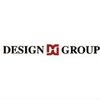
Asked in Barry-Wehmiller Design Group

Q. complex sheet metal part
Designing a complex sheet metal part requires understanding of material properties, manufacturing processes, and geometric constraints.
Consider material selection based on strength, ductility, and cost
Understand manufacturing processes like bending, stamping, and welding
Account for geometric constraints like tolerances, assembly requirements, and part functionality
Interview Experiences of Popular Companies





Top Interview Questions for Mechanical Engg. Design Related Skills

Calculate your in-hand salary
Confused about how your in-hand salary is calculated? Enter your annual salary (CTC) and get your in-hand salary


Reviews
Interviews
Salaries
Users










